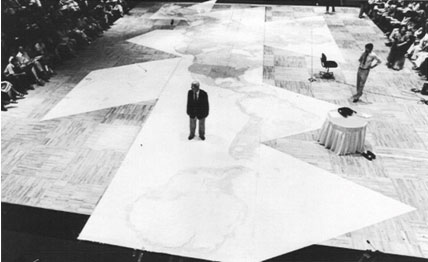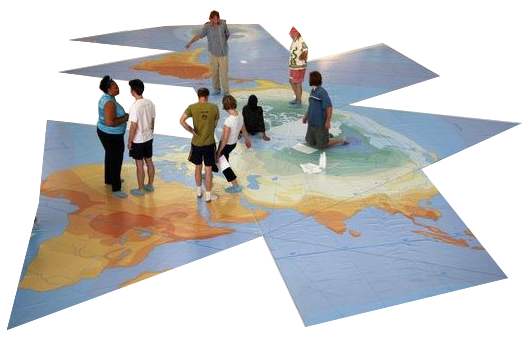From World Game to Future Games

Buckminster Fuller, Irving Janis, and others, provide inspiration for a new approach to the development of learning media. Fuller emphasized that synergy is whole system behavior that cannot be predicted from the behavior of its parts. Synergetics is the dynamics through which synergies are produced.
Buckminster Fuller conceived the idea of “design science” (1951), “World Game” (1961), and “Spaceship Earth” (1963). Only today can a new World Game vision be implemented using geo-aware technologies, internet-supported collaboration, mobile ubiquitous computing, and increasingly sophisticated social networks to support coordinated decision-making, innovation, responsible entrepreneurship, and worldwide collaboration.
Fuller’s vision “to make the world work for 100% of humanity in the shortest possible time through spontaneous cooperation without ecological offense or disadvantage of anyone” is now the motto of the Buckminster Fuller Institute.

Buckminster Fuller saw “The World [Peace] Game” as an alternative to war games, a simulation where players are actors on a global gameboard (the Dymaxion Map gameboard invented by Buckminster Fuller). Players as problem-solvers learn how equitable distribution of global resources can make a world that works for all.
This learning game was designed so students could engage in a global problem-solving simulation about how “to make the world work for 100% of humanity… without ecological offense.” The Game was played in gymnasia with a 75 foot map taped to the gym floor, often using a 35 ft x 75 ft map “gameboard” for this game.
The current explosion of the gaming industry makes a new vision for World Game, in today’s context and supported by today’s technology, timely. Buckminster Fuller’s insights about “the Great Pirates” have new relevance for today.

